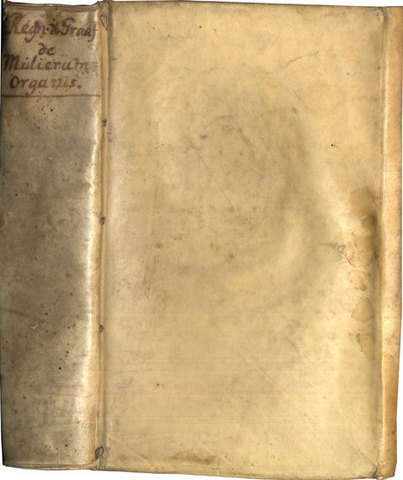Lorem ipsum dolor sit amet, consectetur adipiscing elit. Integer vel eros volutpat, consequat diam ac, eleifend dolor. Mauris risus ante, tempus in interdum elementum, consectetur id odio. Praesent lorem dolor, sollicitudin sed metus at, laoreet vestibulum dolor.
GRAAF, Reinier de (1641–1673)
De mulierum organis generationi inservientibus tractatus novus: demonstrans tam homines & animalia caetera omnia, quae vivipara dicuntur, haud minus quàm ovipara ab ovo originem ducere.
Lugduni Batav., Ex officina Hackiana, 1672.
-
More info

-
More info

-
More info

-
More info

-
More info

-
More info

-
More info

-
More info

-
More info

-
More info

Related items
-

ASELLI, Gasparo (1581–1626)
De lactibus sive lacteis venis quarto vasorum mesaraicorum genere, novo invento. Dissertatio qua sententiæ anatomicæ multæ vel perperam receptæ, vel parù perceptæ illustrantur. ...
-

STENO, Nicolaus [NIELS STENSEN (1636–1686)]
Elementorum myologiæ specimen, seu musculi descriptio geometrica. Cui accedunt canis carchariæ dissectum caput, et dissectus piscus ex canum genere.
Florentiæ, (Fr. Iacobus Tos... -

LAENNEC, René Theophile Hyacinthe (1781-1826)
De l’auscultation médiate, ou traité diagnostic des maladies des poumons et du cœur, fondé principalement sur ce nouveau moyen d'exploration. Tome Premier - Second.
Paris, J.-A... -

BREUER, Joseph (1842–1925) & FREUD, Sigmund (1856–1939)
Studien über Hysterie.
Leipzig & Wien, Franz Deuticke, 1895.
First edition of this fundamental work on the female reproductive organs, a great classic and probably the most important single work in the history of gynaecology. de Graaf believed to have discovered the mammalian egg but it was, in fact, the ovarium follicle, which contains the egg, which he discovered and which he described and illustrated in his famous De mulierum organis generationi (1672). It was Albrecht von Haller (1708-1777) who named the ovarian follicle after de Graaf in commemoration of his preeminent place in the establishment of the anatomy and physiology of the female reproductive system. Many famous writers of the period devoted their works and their speculations to the problem of generation and claimed priority in bitter disputes. Among these De Graaf is the only one remembered. In 1668 he published a treatise on the female sexual organs, but the work on which his fame principally rests is his treatise of the female reproductive organs which constitutes an important step in the history of biology. After making comparative studies of the ovaries of mammals and birds, de Graaf came to the conclusion that the cell-like protuberances already observed by Vesalius and Fallopio in the ovary of mammals corresponded to the egg of the bird’s ovary, and that the process of fertilization is similar in every type of animal; just as bird’s fertilized egg in the ducts of the ovary acquires albumen and shell, the egg of the mammal becomes fertilized through the Fallopian tube, finds its way to the uterus and there develops further. The term “ovary” was used by de Graaf; hitherto the female sexual gland as well as the male had been called testis.
Collation: Pp (24) incl. the additional engraved title, 334, (2), (16) incl. the final blank leaf. Engraved portrait of the author after Gerhard Edelinck (1669), 9 folding engraved plates and 18 full-page engravings numbered Tab. I-XXVII.
Binding: Contemporary vellum.
Provenance: With Pehr Cornelius Tillaeus’ signature and the year 1772 on front fly-leaf.
References: Garrison & Morton, 1209; Nordenskiöld, 171-173; Marc Klein in DSB, V pp 484-485; Hubert R Catchpole, ‘Regnier de Graaf’ in Bulletin of the History of Medicine, 8 (1940), pp 1261-1300; Jocelyn & Setchell, ‘Regnier De Graaf on the human reproductive organs’ in Journal of Reproduction and Fertility, Suppl. 17 (1972). SLS 500. Waller 3669.